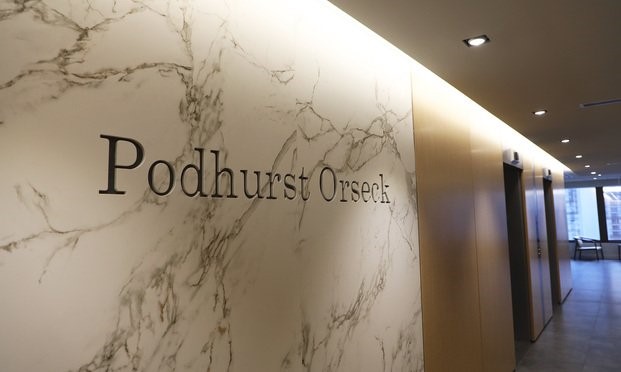
Law360, New York (December 05, 2013, 6:38 PM ET) –As trial lawyers line up to target the Metro-North railroad with multimillion-dollar claims over a deadly New York City train crash, attorneys saw the potential for liability to stretch beyond the railroad’s corporate parent —possibly to the makers of the train itself —depending upon how an investigation shakes out.
At least four plaintiffs’ firms —the Law Offices of Michael S. Lamonsoff PLLC,Podhurst Orseck PA, Ronai & Ronai LLP and Ronemus & Vilensky LLP —said clients had reached out to them and were teeing up claims. Those notices, one of which demanded $10 million in punitive damages, hit the Internet on Thursday.
Four people were killed in the Dec. 1 accident, in which a commuter train with a dozing engineer sped off the tracks in the Bronx, N.Y., at a rate far higher than the speed limit. More than 60 people where injured —11 of them critically.
That leaves Metropolitan Transportation Authority, Metro-North’s quasi-private corporate parent, facing liabilities that could eat up a large chunk of its $400 million insurance portfolio, which kicks in after it meets an initial threshold of $10 million in self-insurance.
That leaves Metropolitan Transportation Authority, Metro-North’s quasi-private corporate parent, facing liabilities that could eat up a large chunk of its $400 million insurance portfolio, which kicks in after it meets an initial threshold of $10 million in self-insurance.
An MTA spokesman said Thursday it had received six total notices of claim.
One, filed by the Vilensky firm, makes clear that the litigation to come won’t stop at theories of negligence against the engineer. The claim notice says Metro-North failed “to have equipment on the train that would ensure that the train would to a stop prior to derailing if the engineer fell asleep or ‘nodded off.'”
Defective products, of course, lie at the heart of product liability cases, noted Edwards Wildman Palmer LLP litigation counsel Andre K. Cizmarik, who said the lack of a so-called dead man’s switch —fairly old technology that trips trains’ accelerators if the conductor become incapacitated —could certainly give rise to a claim based on a product defect.
“It wouldn’t be surprising to me if they got the manufacturers of the train involved,” Cizmarik said. “Keep in mind —it doesn’t cost a lot of money to add an extra defendant. You can expect alot of defendants here.”
With a stout legal department —possibly bolstered by outside counsel —the MTA itself could target the maker of the locomotive,General Electric Co., or the maker of the train cars, Bombardier Inc., if it thought it could defrayits own liability, lawyers said.
“If I were the MTA’s lawyer, would I look for somebody else’s pocket to go into? Sure,” said Bob Vilensky of Ronemus & Vilensky, though he predicted negligence theories, not product liability claims, were likely to dominate the coming litigation.
A great deal of lawyerly interest, and money, is riding on the outcome of an investigation being conducted by the National Transportation Safety Board, the results of which many lawyers predicted would come sooner rather than later.
Plaintiffs’ lawyers like Michael Lamonsoff, who brought out three notices of claim this week, bristled at even the possibility that a defense lawyer might argue the whole tragedy rested on the shoulders of the engineer —especially given the fact, he argued, that the railroad should have installed “positive train control” technology years ago.
“This was not an accident. This was a preventable occurrence,” Lamonsoff said. “Did Metro-North use the technology, which has been available for 25 years now, to take out the human error factor? No. Metro-North has dragged its feet. It’s all about the money.”
But a finding of pure operator error would “simplify the litigation,” according to Podhurst Orseck litigator Steven C. Marks, because it would leave the MTA’s insurance funds clearly in the line of fire and preclude potential cross-claims.
Meanwhile, as plaintiffs’ lawyers angled to be the first into court, filing notices that will trigger so called 50-H hearings to examine claims prior to litigation, many said that the best venue for their clients would be in the Bronx, where juries are seen as friendlier to plaintiffs than those in Manhattan.
Plaintiffs’ lawyers also planned to keep their cases out of federal court, predicting battles over venue should the MTA seek to remove cases —especially those brought by out-of-state plaintiffs —to the federal system on diversity grounds.
“There will be jurisdictional battles,”Marks said. “Federal judges, by and large, tend to be less friendly to victims’ claims and more friendly to corporations. There tends to be more of a bias toward defense in the federal system, at least in my personal experience.”
–Editing by Kat Laskowski and Chris Yates.